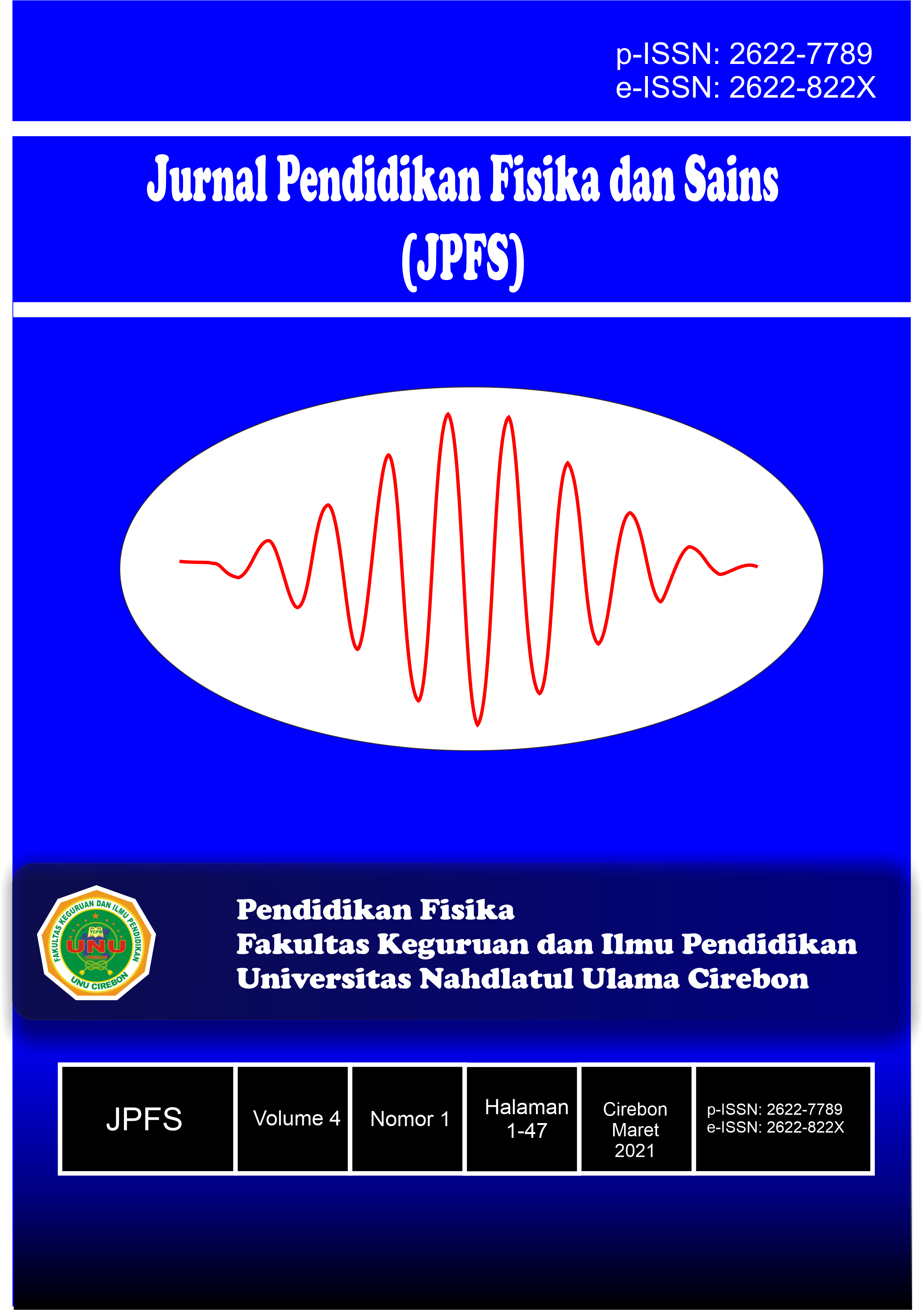Penggunaan Media Video Pembelajaran Berbasis Kontekstual Pada Materi Fungi Untuk Meningkatkan Hasil Belajar Kelas X Di SMA NU Juntinyuat
DOI:
https://doi.org/10.52188/jpfs.v4i1.145Kata Kunci:
Media pembelajaran, pembelajaran kontekstual, Fungi, Learning media, contextual learning, FungiAbstrak
The Contextual-based videos link material with concepts contained in real life. So, it produces learning that is appropriate to student context. Contextual learning emphasizes the process of full student involvement to be able to understand the material being studied and relate it to life situations. This study aims to determine the differences in the improvement of learning outcomes, learning activities, and student learning responses to the use of contextual-based instructional video media. Data collection techniques used were observation, tests, and a survey to respondents in the form of questionnaire questions on contextual-based learning video assessments. The research was conducted at SMA NU Juntinyuat. The design of this study was the Control Group Pretest-Posttest design. One group was given a treatment (experimental group) and the other was not treated (control group). The results showed that: (1) there was a significant difference in student learning outcomes between the experimental class and the control class, (2) the average percentage of student learning activities increased to 92%. (3) The percentage of the average student response questionnaire as a whole is 83% with very strong criteria.
Referensi
Febriani, C. (2017). Pengaruh Media Video terhadap Motivasi Belajar dan Hasil Belajar Kognitif Pembelajaran IPA Kelas V Sekolah Dasar. Jurnal Prima Edukasia, 5 (1), 11-21.
Hapizoh, A., Jufrida, J., & Darmaji, D. (2020). Penerapan Model Contextual Teaching and Learning untuk Meningkatkan Motivasi Siswa di Kelas VII SMPN 30 Muaro Jambi. Edufisika: Jurnal Pendidikan Fisika. 5 (1), 45-51.
Kahfi, M., Ratnawati, Y., Setiawati, W., & Saepuloh, A. (2021). Efektivitas Pembelajaran Kontekstual dengan Menggunakan Media Audiovisual dalam Meningkatkan Motivasi dan Prestasi Siswa Pada Pembelajaran IPS Terpadu. Jurnal Ilmiah Mandala Education. 7 (1), 184-189.
Krisna, F.P.P. & Marga, M.H.P. (2018). Pemanfaatan Video untuk Pembelajaran Matematika Berbasis Masalah Kontekstual pada Topik Aljabar. Prosiding Seminar Nasional Etnomatnesia, 400-405.
Nurwahidah, C.D., Zaharah, & Sina, I. (2021). Media Video Pembelajaran dalam Meningkatkan Motivasi dan Prestasi Mahasiswa. Rausyan Fikr. 17 (1), 118-127.
Saptasari, M. (2012). Pembelajaran Berbasis Kontekstual Sebagai Upaya Peningkatan Minat Mahasiswa pada Taksonomi Tumbuhan di Perguruan Tinggi. Jurnal Pendidikan dan Pembelajaran. 19 (2), 196-203.
Sari, M.N., Sariyatun, S., & Abidin, N.F. (2020). Penerapan Model Pembelajaran CTL dengan Media Visualisasi Museum Purbakala Sangiran untuk Meningkatkan Kesadaran Sejarah dan Hasil Belajar Siswa Kelas X IPS 3 SMA N 1 Gemolong. Indonesian Journal of Social Science Education. 2 (2), 135-144
Sarwono, S. W. (1999). Psikologi Sosial Individu dan Teori-teori. Jakarta; Balai pustaka.
Sinaga, M., Panggabean, F.T.M., & Situmorang, M. (2019). Inovasi Pembelajaran Berbasis Kontekstual untuk Pengajaran Termokia. Talenta Conference Series: Science and Technology (ST). 2 (2).
Sudjana, N. & Rivai, A. (2011). Media Pengajaran. Bandung: Sinar Baru.
Syah, M. (2013). Psikologi Pendidikan,dengan Pendekatan Baru. Bandung: PT. Remaja Rosdakarya.
Diterbitkan
Versi
- 2021-06-07 (2)
- 2021-05-19 (1)
Cara Mengutip
Terbitan
Bagian
Copyright Transfer Agreement
The Authors submitting a manuscript do so on the understanding that if accepted for publication, copyright of the article shall be assigned to Jurnal Pendidikan Fisika dan Sains (JPFS) and Physics Education Programs of UNU Cirebon as publisher of the journal.
Copyright encompasses exclusive rights to reproduce and deliver the article in all form and media, including reprints, photographs, microfilms and any other similar reproductions, as well as translations. The reproduction of any part of this journal, its storage in databases and its transmission by any form or media, such as electronic, electrostatic and mechanical copies, photocopies, recordings, magnetic media, etc. , will be allowed only with a written permission from Jurnal Pendidikan Fisika dan Sains (JPFS) and UNU Cirebon.
Authors are permitted to disseminate published articles by sharing the link/DOI of the article at the journal. Authors are allowed to use their articles for any legal purposes deemed necessary without written permission from the journal with an acknowledgment of initial publication to this journal.
Jurnal Pendidikan Fisika dan Sains (JPFS) and UNU Cirebon and the Editorial Board make every effort to ensure that no wrong or misleading data, opinions or statements be published in the journal. In any way, the contents of the articles and advertisements published in the Jurnal Pendidikan Fisika dan Sains (JPFS) are sole and exclusive responsibility of their respective authors and advertisers.




















